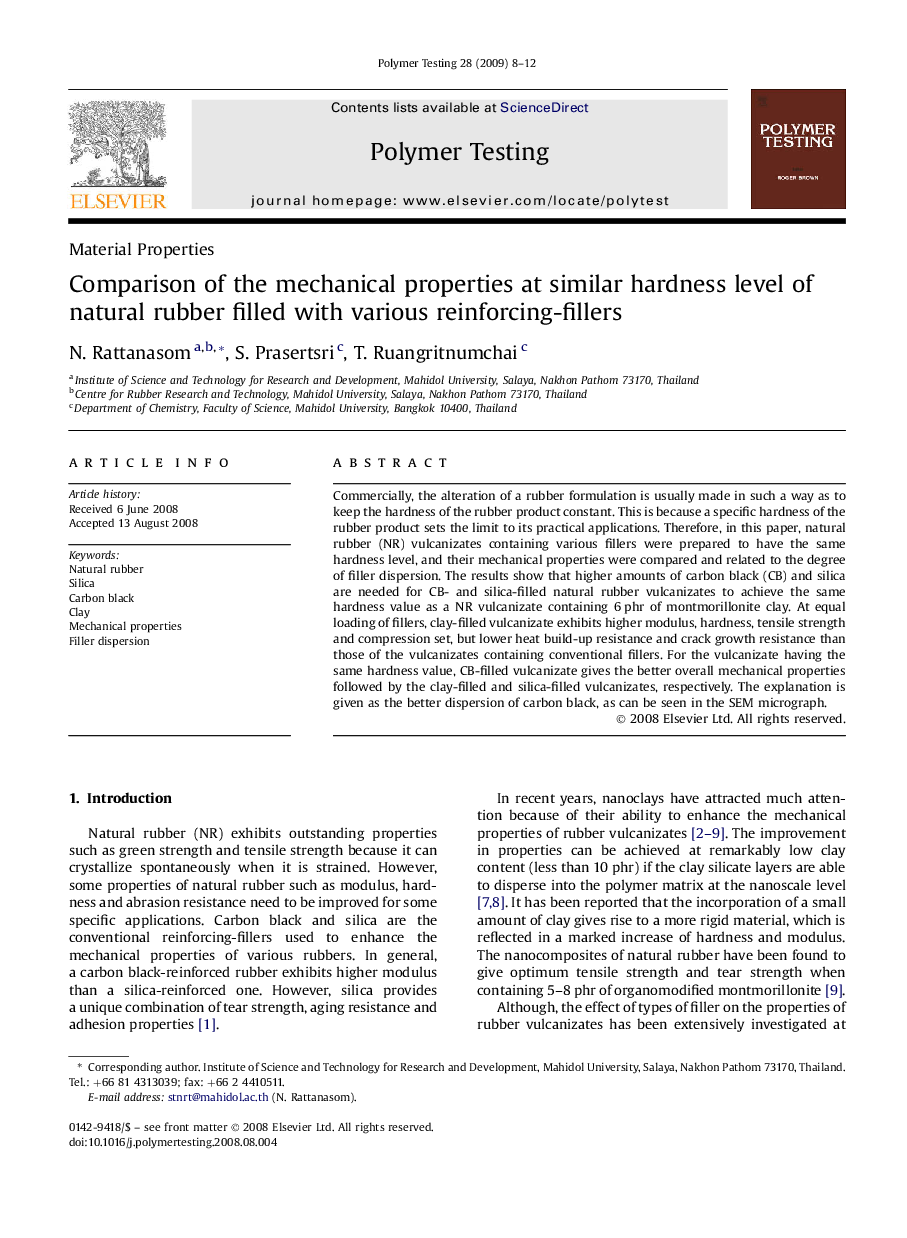| Article ID | Journal | Published Year | Pages | File Type |
|---|---|---|---|---|
| 5207135 | Polymer Testing | 2009 | 5 Pages |
Commercially, the alteration of a rubber formulation is usually made in such a way as to keep the hardness of the rubber product constant. This is because a specific hardness of the rubber product sets the limit to its practical applications. Therefore, in this paper, natural rubber (NR) vulcanizates containing various fillers were prepared to have the same hardness level, and their mechanical properties were compared and related to the degree of filler dispersion. The results show that higher amounts of carbon black (CB) and silica are needed for CB- and silica-filled natural rubber vulcanizates to achieve the same hardness value as a NR vulcanizate containing 6Â phr of montmorillonite clay. At equal loading of fillers, clay-filled vulcanizate exhibits higher modulus, hardness, tensile strength and compression set, but lower heat build-up resistance and crack growth resistance than those of the vulcanizates containing conventional fillers. For the vulcanizate having the same hardness value, CB-filled vulcanizate gives the better overall mechanical properties followed by the clay-filled and silica-filled vulcanizates, respectively. The explanation is given as the better dispersion of carbon black, as can be seen in the SEM micrograph.
